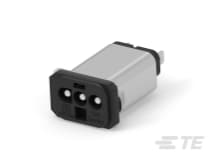-
TE Connectivity provides a recommended PCB layout and footprint in their application note AN-1405, which can be found on their website. It's essential to follow these guidelines to ensure proper thermal management and signal integrity.
-
To handle the high current rating of 10DAS1, ensure that your PCB traces and vias are designed to handle the maximum current rating. You may need to use thicker traces, multiple vias, or even use a copper pour to dissipate heat. Additionally, consider using a heat sink or thermal pad to further reduce thermal resistance.
-
While the datasheet specifies an operating temperature range of -40°C to 125°C, it's essential to note that the device's performance may degrade at higher temperatures. TE Connectivity recommends derating the current rating by 1.5% per degree Celsius above 85°C to ensure reliable operation.
-
Yes, 10DAS1 is designed to withstand high-vibration environments. However, it's crucial to ensure that the device is properly secured to the PCB using the recommended mounting method, and that the PCB is designed to withstand the vibration levels. TE Connectivity provides guidance on vibration testing and PCB design in their application note AN-1405.
-
To troubleshoot issues with 10DAS1, start by reviewing the device's datasheet and application notes. Check for proper PCB layout, thermal management, and signal integrity. Use thermal imaging or temperature measurement tools to identify hotspots. If the issue persists, contact TE Connectivity's technical support for further assistance.
 10DAS1 datasheet
by TE Connectivity
10DAS1 datasheet
by TE Connectivity